Locked into a chair and cornered by a growling, drooling, bloodthirsty alien… Braving the otherworldly unknown hidden within the historically haunted Hollywood Tower Hotel… Racing through the cataclysmic darkness of the final minutes of the Cretaceous with a hellish Carnotaur giving chase… Navigating the misty graveyard path into the flickering parlor of an abandoned manor…
Long before these frightful experiences were part of a Disney Parks visit, guests were startled, spooked, and downright scared by a Fantasyland favorite that tricked its riders into expecting princesses and happy endings.
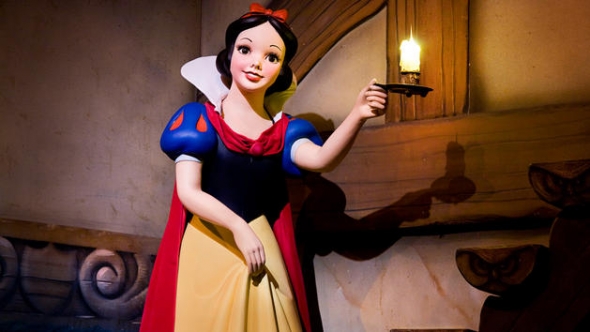
Yep, for generations of visitors who grew up with Snow White’s Scary Adventures, it was a test of bravery to come out the other side with eyes open… A terrifying classic in the century-old spook house tradition, this Fantasyland favorite wasn’t just a tribute to the first of Disney’s animated features and its royal heroine, but to Walt’s own fascination with fear…
So as we dive into the full story of this Walt Disney original, we’ll explore not only its permutations that span three continents, but its gradual pruning at the hands of modern Imagineering. Is Snow White’s Scary Adventures really gone? If you dare, head with us into the dark woods to find out…
And before we head off, remember that you can unlock rare concept art and audio streams in this story, access over 100 Extra Features, and recieve an annual Membership card and postcard art set in the mail by supporting this clickbait-free, in-depth, ad-free theme park storytelling site for as little as $2 / month! Become a Park Lore Member to join the story! Until then, let’s start at the beginning…
A History in the Dark
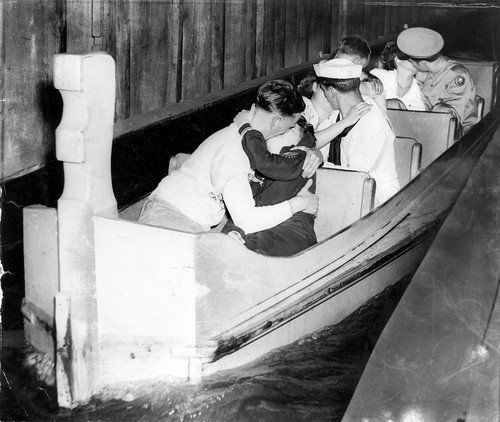
Believe it or not, dark rides have been around for more than a century. In the late 1800s, simple dark rides cast as “Old Mills” or “River Caves” invited guests to sail through darkened scenes (sometimes lit by the brand new electric lightbulb!) canoodling in the dark. Before long, these historic dark rides gained a familiar name – “Tunnels of Love” – as they presented the perfect opportunity for a secret kiss in the the prudish Victorian era when public displays of affection as innocent as hand-holding were forbidden.
(Today, for example, the oldest surviving dark ride in the world is at Kennywood in Pittsburgh, Pennsylvania: The Old Mill, dating to 1901 – that’s 120 years ago! – nostalgically restored in 2020 from decades of various character overlays.)
In 1928, Marvin Rempfer and Leon Cassidy founded the Pretzel Amusement Ride Company and patented the technology behind a single-rail dark ride (see the Member-exclusive image, above). Whereas dark rides prior had been gravity-based, or relied on boats leisurely drifting through waterwheel-powered channels, Pretzel’s patent was something new.
Vehicles would be affixed to – and guided by – a single rail supplied with electricity, powering an on-ride motor that would steadily advance carts through the ride’s rooms. In fact, Pretzel Rides kicked off our modern understanding of “classic” dark rides: zippy and kinetic, bursting through swinging doors, and twisting and turning through scenes and vignettes of props and lighting cues.
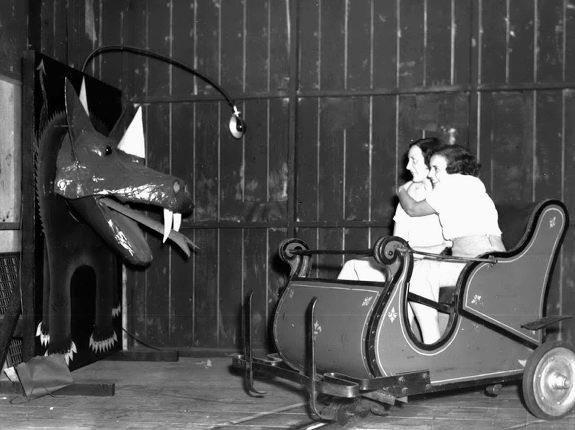
As the years pressed on, the settings and scares of these dark rides became more elaborate, resulting in spook houses, ghost trains, Noah’s Arks, mine rides, walkthroughs, and laff-in-the-dark funhouses. Increasingly, props, sounds, theatrical lightning, scenery, and surprises made dark rides a staple of amusement parks across the globe.
For generations of early 20th century kids, Pretzel dark rides offered a fright not far from home; a chance to be shocked and startled by sudden flashes, car horns, shaking skeletons, wire cages, and more. More to the point, though, they’d unlocked an existential human experience…
The delicious goosebump
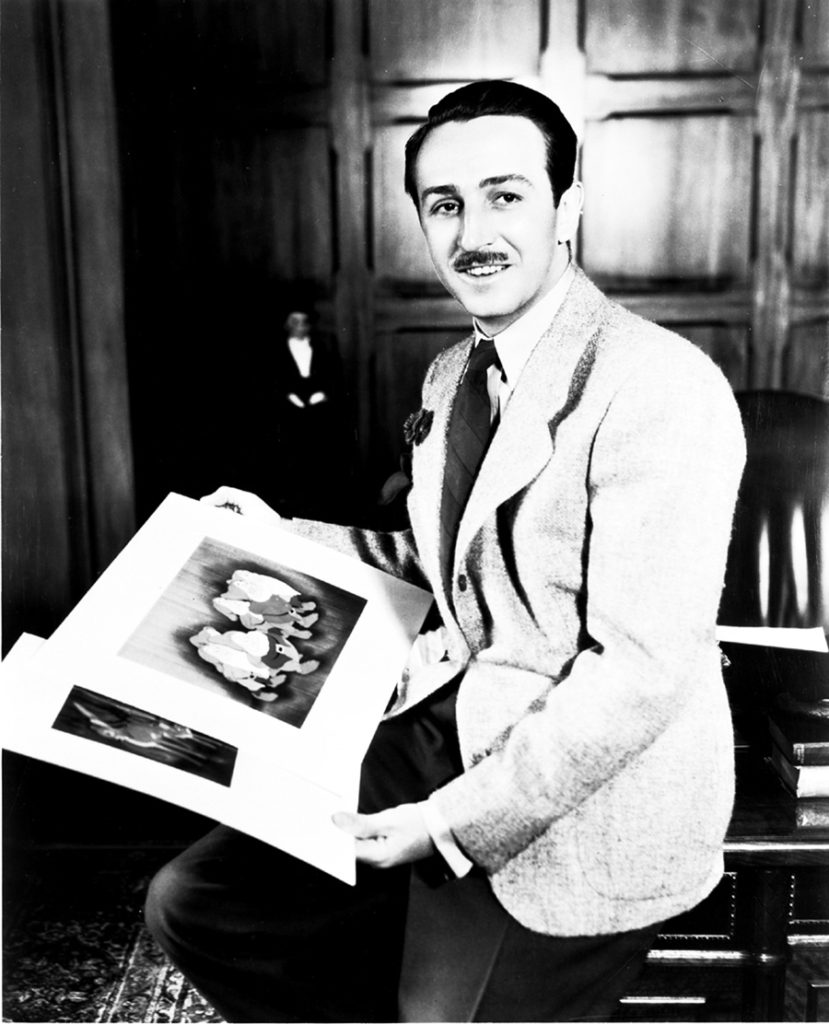
“I don’t believe in playing down to children, either in life or in motion pictures. I didn’t treat my own youngsters like fragile flowers, and I think no parent should. […] Life is composed of lights and shadows, and we would be untruthful, insincere, and saccharine if we tried to pretend there were no shadows. Most things are good, and they are the strongest things; but there are evil things too, and you are not doing a child a favor by trying to shield him from reality.”
Walt’s personal friend (and Mary Poppins star) Dick Van Dyke once recalled: “Walt once said, ‘What I understand about kids that nobody else understands, is that they think it’s delicious to be frightened.’ Kids love to be scared. They love ghost stories. And he always put a witch or something in there, to give them that delicious goosebump. He knew.”
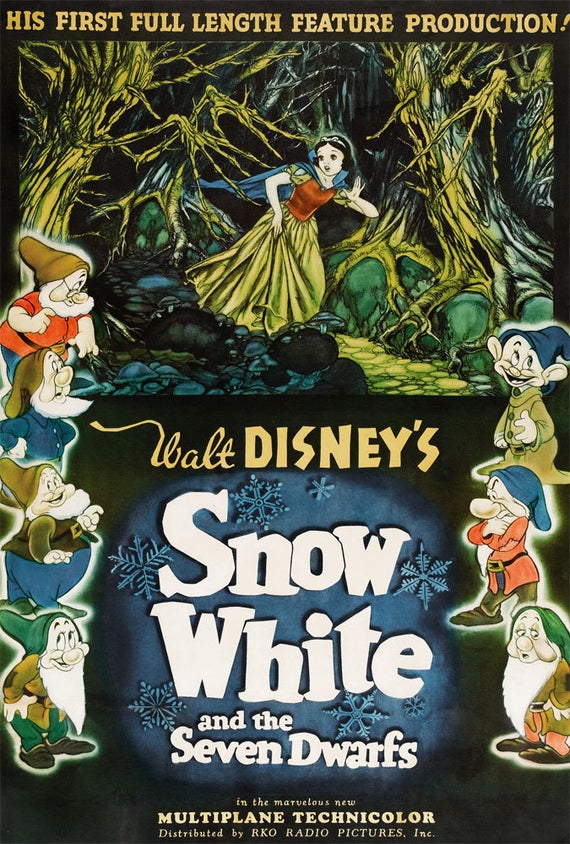
Which is probably why, when Snow White and the Seven Dwarfs made its debut at Los Angeles’ Carthay Circle Theater on December 21, 1937, it was more than just the first full-length animated feature film of all time; more than just a pivotal project in the history of Walt Disney Studios; more than just the universally acclaimed, “serious” movie that naysayers had called impossible. It was scary.
And for good reason. Walt and his team had taken great care in their development of the groundbreaking film to explore the nuance of character and atmosphere that had been impossible to fully unravel in the animated shorts they were used to. Early iterations of the story had included a cartoonishly comedic, oblivious, and egotistical queen who’d pursue Snow White with exaggerated, slapstick gags. But over the years of development, Disney’s animation team turned their focus to developing characters with as much nuance and care as a stage play… which meant a villain without a whiff of laughter or the slightest hint of irony — a serious, cinematic “bad guy” with a threatening presence of true malice. The result, of course, was the cold and heartless (but elegant, stately, and beautiful) Evil Queen modeled after an ageless ice goddess from the 1935 film adaptation of H. Rider Haggard’s tale “She.”
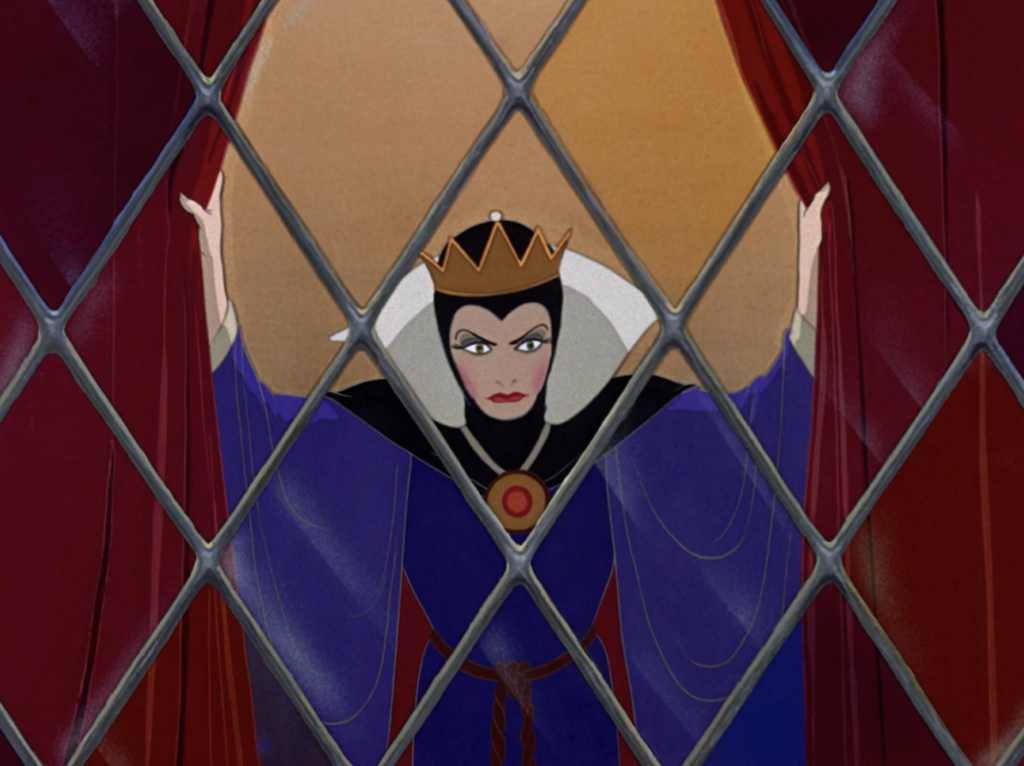
For children and adults alike, Snow White – and its wicked villain – was a thrill that set pulses racing… and sometimes bladders, too. Urban legend holds that after an early premiere showing in New York City, the operators of Radio City Music Hall noted that several children had lost their… um… courage during the screening, requiring the replacement of expensive red velvet upholstery.
(According to entertainment writer Jim Hill on the Disney Dish podcast, Walt didn’t edit down the Evil Queen’s transformation or Snow White’s race through the dark forest, but did cut some particularly “terrifying” footage from the film, which went unseen until 2001.)
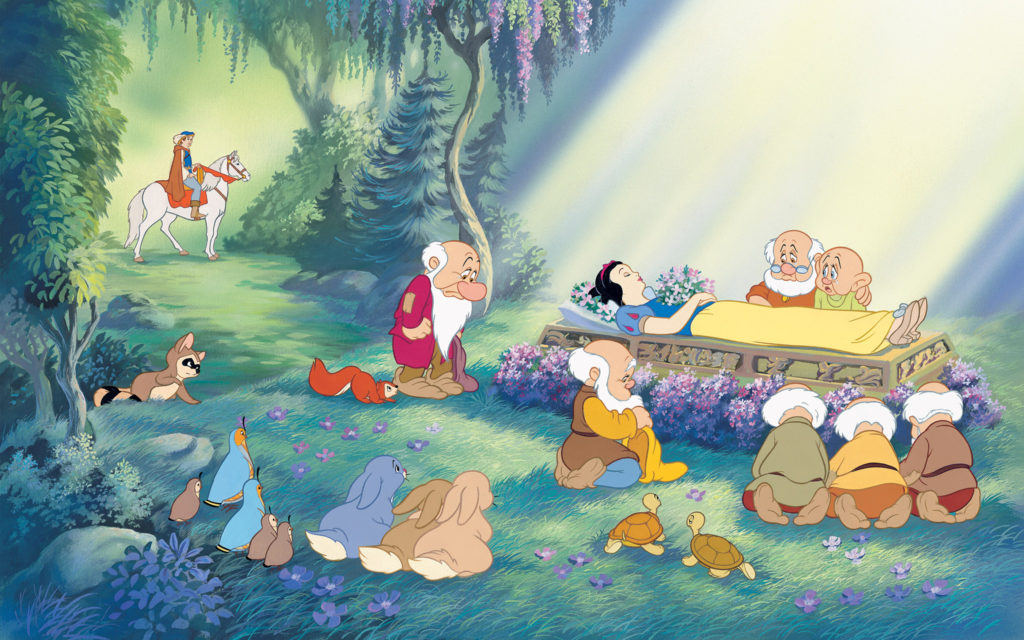
So while Snow White and the Seven Dwarfs is today remembered as the first of Disney’s full-length fairytale adaptations and retconned as the debut of the retroactively-coined Disney Princess, it might just as importantly be remembered as the first to produce a Disney Villain. And as the opening of Disneyland neared, the frights of Snow White and the scares of a dark ride seemed to coalesce into a perfect attraction…
Once upon a time…
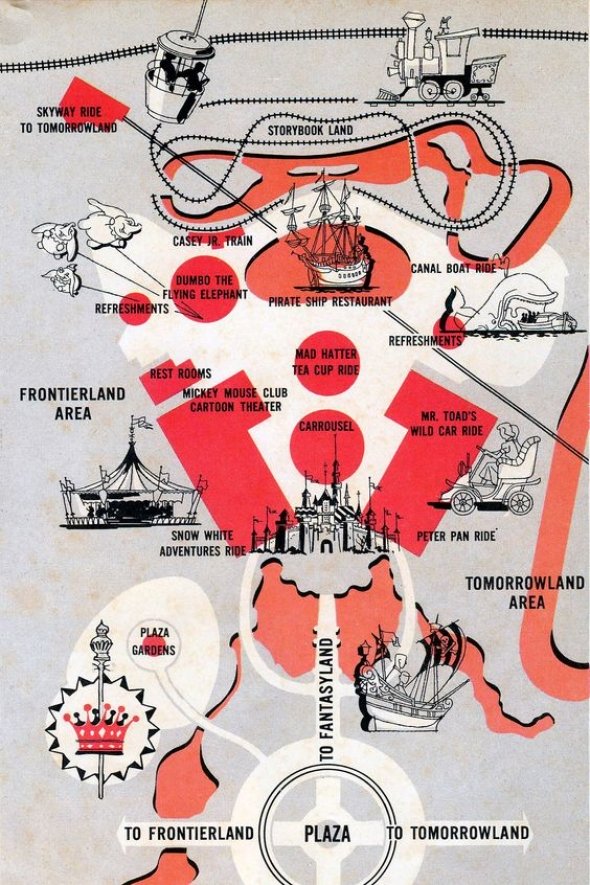
Dark rides would be the perfect medium in which to tell the stories of Disney’s greatest animated films, so they were given a prominent position in mirrored showbuildings branching from Sleeping Beauty Castle, creating an inner courtyard to the land. At that time, Walt and his designers had more or less surrendered to the idea that Disneyland’s tight budget (and even tighter timetable) would require outside vendors to supply the ride systems for Fantasyland’s dark rides.
Californian ride manufacturer Arrow Development was contracted to construct three bus-bar powered dark rides with off-the-shelf ride vehicles (which could then be adorned with decorative, Disney-animator-sculpted fiberglass shells). If Fantasyland were to allow guests to journey into Disney’s definitive versions of beloved animated tales, it would only make sense that Snow White would earn a spot. And it sure didn’t hurt that Arrow offered a ready-made mine cart vehicle.
This original Fantasyland would use the dark ride medium to tell the story of the world’s first full-length animated film and the soft-spoken heroine who had served as Disney’s first-ever princess… Read on…



